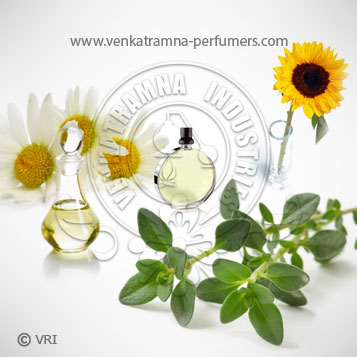
| Botanical Name | Melaleuca Alternifolia |
| Common Name | Jasmine Grandilfflorum, Islamic Bakhoor Attar |
| Country of Origin | India |
| Solubility | Water Soluble |
| Specific Gravity | 0.885 - 0.906 |
| Optical Rotation | +5 ~ +15 |
| Refrective Index | 1.48 |
| PlantPart | Mixture of Many Parts |
| Bland With | It blends well with alcohol, ether and chloroform |
| CAS No | 68647-73-4 |
| Flash Point | 57 C |
| Extraction Method | steam distillation |
The attar is manufactured from natural extracts and contains no alcohol thereby, a suitable alternative to colognes for Muslims. It belongs to the bakhoor attar family and has an Arabian twist to it. Used for their perfumes, these attars are ideal gifts for both male and female.
The word 'attar', 'ittar' or 'othr' is basically an Arabic word which means 'scent'; this in turn is believed to have been derived from the Persian word Atr, meaning 'fragrance'. The story of Indian perfumes is as old as the civilization itself. Archaeological evidence shows the earliest inhabitants of the Indian subcontinent held plants in great reverence. With the passage of time, scented oils were extracted by pressing, pulverizing or distilling aromatic vegetable and animal produce. Early indications of this activity are available from the perfume jars and terracotta containers of the Indus Valley civilization, where archeological work has revealed round copper stills, used for the distillation process that are at least five-thousand years old (reference req.). These stills are called degs. Following the seasons of the flowers, traditional ittar-makers, with their degs, traveled all over India to make their fresh ittars on-the-spot. Even now, a few traditional ittar-makers still travel with their degs to be close to the harvest. Their equipment has changed little, if at all. A large number of references to cosmetics and perfumes in Sanskrit literature were found like in the Brhatsamhita is a 6th century Sanskrit encyclopedia by Varahamihira (505 AD – 587 AD). Cosmetics and perfumes making were mainly practiced for the purpose of worship, sale and sensual enjoyment. Gandhayukti gave recipes for making scents. It gives a list of eight aromatic ingredients used for making scents. They were: Rodhara, Usira, Bignonia, Aguru, Musta, Vana, Priyangu, and Pathya. The Gandhayukti also gave recipes for mouth perfumes, bath powders, incense and talcum powder. The manufacture of rose water began perhaps in the nineteenth century AD. The earliest distillation of ittar was mentioned in the Ayurvedic text Charaka Samhita. The Harshacharita, written in 7th century AD in northern India, mentions use of fragrant agarwood oil.
Color : colorless to pale yellow & spicy, rather pungent smell,
Aroma : Fresh and Light Smell
It contains Alcohol Denat, Water, Fragrance, Benzophenone-2 and other essential oils.
This attar is used by many people as a personal perfume, mainly by Muslims due to absence of alcohol. These are free from any preservatives or chemical additives and are widely used for aromatherapy purposes. These floral extracts with base oil are useful in cases of stress, hypertension and treating skin ailments. Inhaling of sandalwood oil reduce stress and can also stop vomiting.